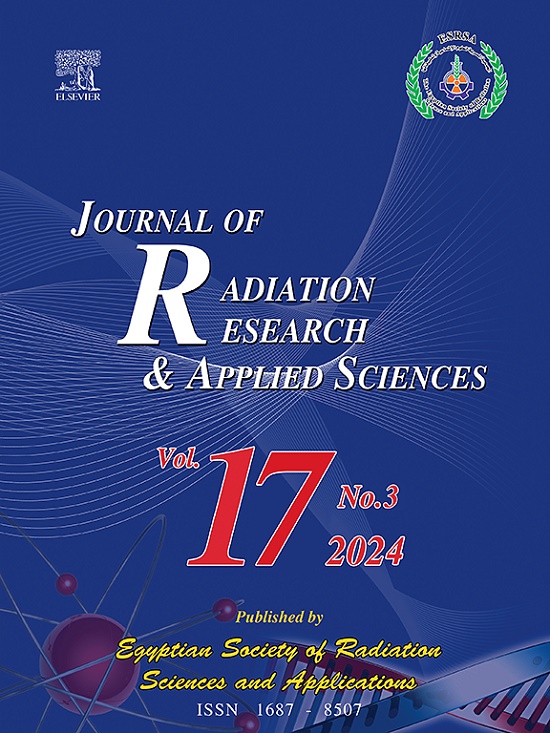Investigation of effect of pitch change on radiation dose in head and abdominal computed tomography scans: A phantom study
IF 2.5
4区 综合性期刊
Q2 MULTIDISCIPLINARY SCIENCES
Journal of Radiation Research and Applied Sciences
Pub Date : 2025-06-11
DOI:10.1016/j.jrras.2025.101691
引用次数: 0
Abstract
Purpose
The aim of the study was to examine the pitch value, which is one of the parameters affecting the radiation dose. In both adult and pediatric head and abdominal Computed Tomography (CT) examination protocols, CTDIvol and DLP values were obtained at different pitch values using a phantom.
Methods
The pitch values determined automatically by the CT device for adult head, child head, adult abdomen and child abdomen scans were recorded as 0.35, 0.6, 1.25 and 1.20, respectively. Then, scans were taken at pitch values of 0.6, 0.8, 1.0, 1.2, and 1.5 for adult head and abdomen. Statistical analyses were performed using OriginPro and SPSS statistical programs.
Results
According to the PCA (Principal Component Analysis) method, PC1 (Principal Component) was obtained as 58.93 %, PC2 (Principal Component) as 29.41 %, and the sum of both PCs was observed to constitute 88.34 % of the total variance. In the K-Means cluster analysis, two different classes were obtained. According to the CTDIvol and DLP measurements, it was observed that the measurement with the highest PC1 score was the adult abdominal CT scan with a pitch value of 1.5.
Conclusion
According to the results obtained, it can be said that changing the pitch value affects the CTDIvol and DLP values, which are radiation dose indicators and found on the dose page. In addition, it can be said that it would be advantageous to use PCA and k-means cluster analysis, which are Unsupervised Machine Learning methods, on data obtained from computer-aided imaging devices such as CT.
音高变化对头部和腹部计算机断层扫描辐射剂量影响的研究:一项幻象研究
目的研究影响辐射剂量的参数之一基音值。在成人和儿童头部和腹部计算机断层扫描(CT)检查方案中,CTDIvol和DLP值在不同的音高值下使用幻像获得。方法记录成人头部、儿童头部、成人腹部和儿童腹部CT自动确定的音高值分别为0.35、0.6、1.25和1.20。然后,对成人头部和腹部分别以0.6、0.8、1.0、1.2和1.5的音高值进行扫描。采用OriginPro和SPSS统计程序进行统计分析。结果采用主成分分析(PCA)方法,得到PC1(主成分)为58.93%,PC2(主成分)为29.41%,两者之和占总方差的88.34%。在K-Means聚类分析中,得到了两个不同的类别。根据CTDIvol和DLP测量结果,PC1评分最高的测量是成人腹部CT扫描,节距值为1.5。结论根据所得结果,可以看出,改变基音值会影响辐射剂量指标CTDIvol和DLP值,这两个指标在剂量页面上可以找到。此外,可以说,对于从计算机辅助成像设备(如CT)获得的数据,使用PCA和k-means聚类分析(Unsupervised Machine Learning)方法将是有利的。
本文章由计算机程序翻译,如有差异,请以英文原文为准。
求助全文
约1分钟内获得全文
求助全文
来源期刊

Journal of Radiation Research and Applied Sciences
MULTIDISCIPLINARY SCIENCES-
自引率
5.90%
发文量
130
审稿时长
16 weeks
期刊介绍:
Journal of Radiation Research and Applied Sciences provides a high quality medium for the publication of substantial, original and scientific and technological papers on the development and applications of nuclear, radiation and isotopes in biology, medicine, drugs, biochemistry, microbiology, agriculture, entomology, food technology, chemistry, physics, solid states, engineering, environmental and applied sciences.
 求助内容:
求助内容: 应助结果提醒方式:
应助结果提醒方式:


